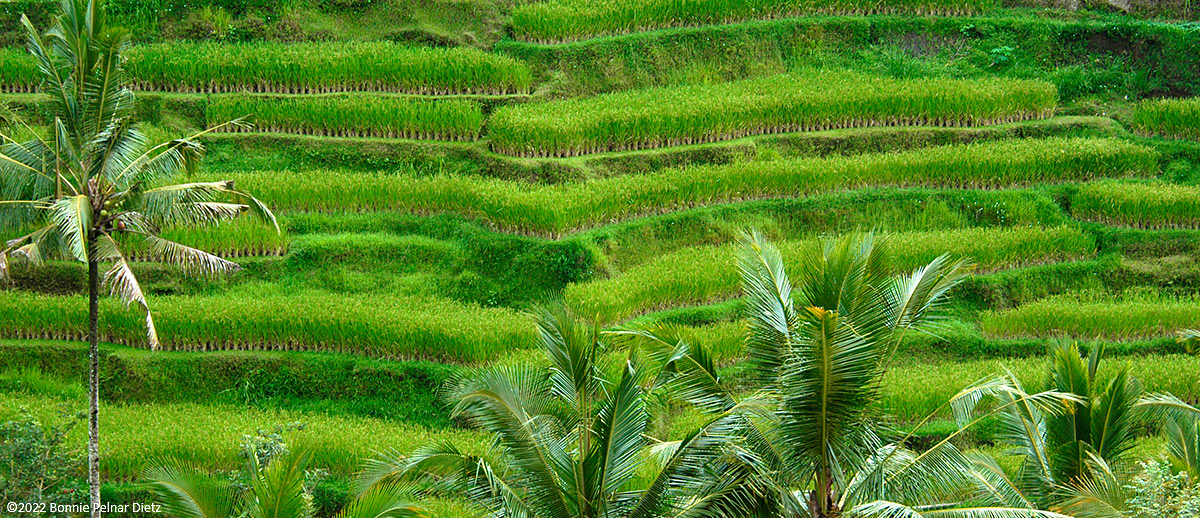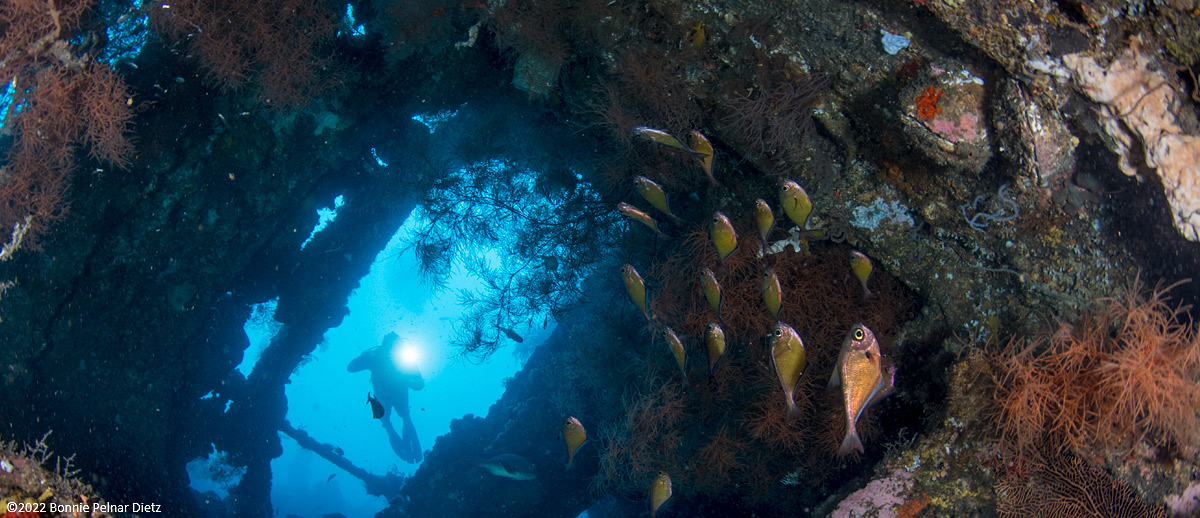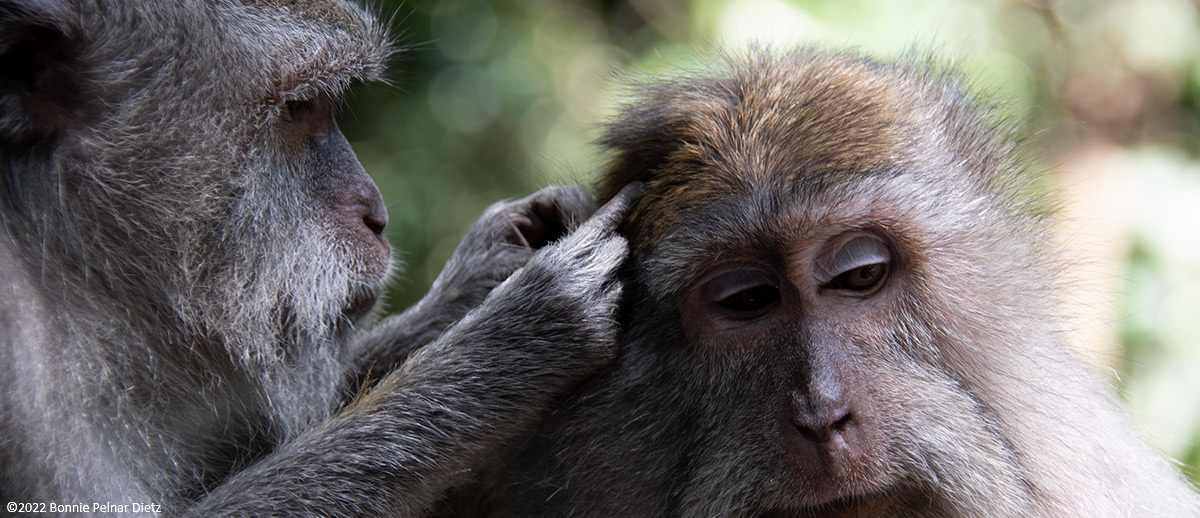A land of unexplored natural beauty and rich cultural heritage
The Indonesian territory of Kalimantan makes up 2/3 of Borneo island. Well known for its tropical forests, rich natural resources, and exotic flora and fauna, Kalimantan offers a unique, unexplored world of its own. Originally inhabited by the Dayak, it is now home to 10 million inhabitants with a variety of culture. The indigenous Dayaks, or the Orang Gunung (Mountain People), traditionally live in longhouses called Lamin or Umaq Daru that can house as many as 50 people. Once known as headhunters, the tribe consists of many sub-tribes such as Iban, Punan and Banuaq. The arrival of newcomers has given this land a rich cultural mixture of Dayak, Malay, Chinese, Javanese plus religious influence of Islamic teachings and Hinduism.
Rivers plays a very important role in communication and economy of the inhabitants. Most of community life are centered along rivers: houses, activities, etc. For the adventurous, this island offers many options to satisfy that desire: rafting or traveling along some of the world's most beautiful and challenging rivers, trekking through traditional villages and jungles, or take a safari trip in one of the many national parks.
There are four provinces: East, South, Central and West which have their own governor.
East Kalimantan
Home to the longest river in Kalimantan, the Mahakam river, where freshwater dolphin can be found, East Kalimantan is growing to be an industrially advanced area. This is contributed by its position as a major producer of oil and timber, and as the second largest province in Indonesia. Also home to Kalimantan's indigenous inhabitant, the Dayaks, in this province we can find many of Dayak cultural materials. 80 percent of this province is covered by forest.
South Kalimantan
This rich, fertile province is divided into two distinct regions by the Meratus mountains. The eastern part is mostly covered with mountains and dense tropical forest, while the southern part has more rivers and lowlands. The abundance of forests with their wide variety of trees has helped make this province one of the largest wood producers in Indonesia. The rich, unique natural resources found on this land can be seen from the exquisite traditional and commercial handicrafts which are completely made from local raw material. Some of the most exciting ways to experience all this is by backpacking over hills and racing down river on bamboo rafts.
Central Kalimantan
Covering an area of 153,800 square kms and consisting mostly of dense jungles, this is the largest province of the island. The terrain includes mountainous area in the northern part, dense tropical forest in the central, and swampy area with many rivers crisscrossing the southern part. Like other parts of the island, it has tropical climate with temperature ranging from 26 C to 30 C in day time and 15 - 20 C on nights, and average humidity of 70 - 90%.
West Kalimantan
The nickname 'land of the equator' earned by this province is contributed by the geographic position of its capital, Pontianak, which lies exactly on the equator. Covering an area of 146,807 square km, the province has swampy low plains containing many
rivers, lakes and villages, often linked by bridges. Once an important cultural crossroads, and because of its strategic location in the trade route of neighboring countries, this province is easily accessible from Jakarta and Singa pore. Like other Kalimantan provinces, this land is also rich of unexplored natural resources, such as minerals and precious stones.
The Special Sights
National parks and nature reserves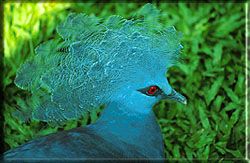 Kalimantan has a number of nature reserves to protect its unique flora and fauna. Kersik Luway is where the very rare 'Black Orchid' (Colongenia Pandurata) grows, located upstreams the Mahakam river, East Kalimantan. Bontang, in the regency of Kutai with an area of about 200,000 ha, has a rare flora and fauna. The Kutai National Park near Bontang is worth visiting to see scenery especially those at Beras Basah. Tanjung Puting National Park in Central Kalimantan is the oldest conservation site of Kalimantan's flora and fauna. The park is inhabited by Orang Utans, Owa-owa, Bekantan and other primates. Also found here the Orang Utan Rehabilitation Centre which is supported by the Would Wildlife Fund (WWF). In West Kalimantan, Gunung Palung National Park located in the Ketapang regency is home to miscellaneous flora and fauna. The Raya Pasi mountain located in the Singkawang regency is also an interesting place to visit to see the Rafflesia or giant flower. Singkawang is also a nature reserve. The forest of Sanggau is worth a visit where hot springs, lakes and caves can be found. The other nature reserves are the forests of Baning and Kelam Hill in the Sintang regency. While in Kapuas Hulu, there is the Bentuang. In South Kalimantan, there is the Kaget island, home to a wide variety of birds and monkeys, Most notably the humorous longnosed proboscis monkeys.
Kalimantan has a number of nature reserves to protect its unique flora and fauna. Kersik Luway is where the very rare 'Black Orchid' (Colongenia Pandurata) grows, located upstreams the Mahakam river, East Kalimantan. Bontang, in the regency of Kutai with an area of about 200,000 ha, has a rare flora and fauna. The Kutai National Park near Bontang is worth visiting to see scenery especially those at Beras Basah. Tanjung Puting National Park in Central Kalimantan is the oldest conservation site of Kalimantan's flora and fauna. The park is inhabited by Orang Utans, Owa-owa, Bekantan and other primates. Also found here the Orang Utan Rehabilitation Centre which is supported by the Would Wildlife Fund (WWF). In West Kalimantan, Gunung Palung National Park located in the Ketapang regency is home to miscellaneous flora and fauna. The Raya Pasi mountain located in the Singkawang regency is also an interesting place to visit to see the Rafflesia or giant flower. Singkawang is also a nature reserve. The forest of Sanggau is worth a visit where hot springs, lakes and caves can be found. The other nature reserves are the forests of Baning and Kelam Hill in the Sintang regency. While in Kapuas Hulu, there is the Bentuang. In South Kalimantan, there is the Kaget island, home to a wide variety of birds and monkeys, Most notably the humorous longnosed proboscis monkeys.
Cultural heritage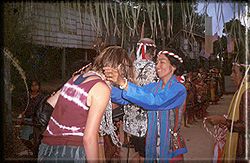 In East Kalimantan, Berau and Marine Tourism on Derawan island is where we can see the remains of a kingdom called the Keraton Gunung Tambur and the Keraton Sarnbaliung. Derawan island is approximately 3 hours boating from Tanjung Redep (The Capital of Berau regency). It is also a good place for water sports such as scuba diving, fishing, and swimming. Tenggarong, up the Mahakam river from Samarinda, is the capital of the Kutai regency and was once the seat of the Kutai sultanate. The Sultan's Palace on the riverside is now a museum where historical objects from the sultanate are kept. Every 24th of September, dance and music performances are given to celebrate the town's anniversary. Tanjung Isuy, located in East Kalimantan hinterland, has a traditional Dayak long-house which has been turned into lodges for visitors. Visitors are usually greeted by a traditional Benuaq Dayak welcome. The place can be reached through the scenic Mahakam river. At Muara Ancalong - Muara Wahau visitors can watch traditional dances of Kenyah Dayak which are performed at a long-house. In Flower Island, South Kalimantan, we can find many species of monkeys and an old Chinese temple where local Chinese bring offerings of fresh fruit and peanuts to a tribe of aggressive macaquef in hopes of being blessed with even greater prosperity. An original Betang (traditional longhouse) can be seen in Saham village, 158 km from Pontianak, West Kalimantan. The measures of this long-house are: 186 m long, 6 m wide, inhabited by 269 people. A heritage to Kaharingan religion, a sect of Hinduism, can be found in Bukit Rawi, small village of Central Kalimantan.
In East Kalimantan, Berau and Marine Tourism on Derawan island is where we can see the remains of a kingdom called the Keraton Gunung Tambur and the Keraton Sarnbaliung. Derawan island is approximately 3 hours boating from Tanjung Redep (The Capital of Berau regency). It is also a good place for water sports such as scuba diving, fishing, and swimming. Tenggarong, up the Mahakam river from Samarinda, is the capital of the Kutai regency and was once the seat of the Kutai sultanate. The Sultan's Palace on the riverside is now a museum where historical objects from the sultanate are kept. Every 24th of September, dance and music performances are given to celebrate the town's anniversary. Tanjung Isuy, located in East Kalimantan hinterland, has a traditional Dayak long-house which has been turned into lodges for visitors. Visitors are usually greeted by a traditional Benuaq Dayak welcome. The place can be reached through the scenic Mahakam river. At Muara Ancalong - Muara Wahau visitors can watch traditional dances of Kenyah Dayak which are performed at a long-house. In Flower Island, South Kalimantan, we can find many species of monkeys and an old Chinese temple where local Chinese bring offerings of fresh fruit and peanuts to a tribe of aggressive macaquef in hopes of being blessed with even greater prosperity. An original Betang (traditional longhouse) can be seen in Saham village, 158 km from Pontianak, West Kalimantan. The measures of this long-house are: 186 m long, 6 m wide, inhabited by 269 people. A heritage to Kaharingan religion, a sect of Hinduism, can be found in Bukit Rawi, small village of Central Kalimantan.
Trekking and water adventure
A trip along the Mahakam river in East Kalimantan offers unique riverside scenery of rare flora and fauna. Floating markets of all sizes can be found everywhere on Barito River, Banjarmasin South Kalimantan, with the one at the junction of the Kuin and Barito rivers is considered one of the best. Market activities usually end at 9 am. The traditional villages around Loksado, in the mountains east of Kandangan, is a wonderful place to be explored by foot. Amandit river is an excellent place for white water rafting. The first stretch, from Loksado to Muara Hatip, has rapids ranked grades I to 21/2. The second, from Muara Hatip to Batu Laki, includes rapids of grade 3. White-water lovers can also find satisfaction in Gohong Rawai, Central Kalimantan, known for its beautiful and challenging rapids. Many cities in Kalimantan are best explored through rivers, such as Pontianak and Banjarmasin.
Mining
In Teweh and Batu Apu gold mines, located in Rungan district of Central Kalimantan, gold panning is done traditionally by local people. A number of gold mines can also be found in other parts of Central Kalimantan. Traditional diamond digging, mostly with simple equipment, can be observed in Cempaka, 45 minutes from Banjarmasin South Kalimantan. In Martapura, visitors can see how precious stones are cut and polished. Beaches and resorts Kumai Beach, approximately 22.5 km from Pangkalanbun in Central Kalimantan has exotic views and serves as a transit place before Tanjung Puting National Park. Pasir Panjang, 17 km from Singkawang in the Sambas regency, South Kalimantan has a beach resort, ideal for swimming. Comfortable cottages are available equipped with a tennis court. In the vicinity of Singkawang, the Gunung Poteng hill resort with its fresh air is a good place for nature lovers. In East Kalimantan, Tanah Merah Indah - Lempake recreational park has a waterfall, located about 16 km from downtown Samarinda. Kijing and Temajoh island beach resorts near Pontianak, West Kalimantan, is also a good place for diving, fishing and sailing.
The Principal Towns
Samarinda, the capital of East Kalimantan, is known for its fine sarong cloth. Samarinda has a number of modest but comfortable hotels. Balikpapan has the second busiest airport in Indonesia. The city now serves as the gateway to East Kalimantan with air and sea connections to Jakarta and other major points in Indonesia. It has a number of good hotels, including one of international standard, as well as recreation facilities. Baniarmasin, capital of South Kalimantan is now developing as a tourist city. The nickname 'river city' reflects the unique way of life of its local residents found along the numerous rivers crisscrossing the city. Palangkaraya is the center of government, train and education of Central Kalimantan. Worth visiting is the Regional Museum of Palangkaraya that contains historical and cultural interests from all over Central Kalimantan. Pontianak is the capital of West Kalimantan lies exactly on the equator' Some interesting place to visit are Equator Monument, Kadariah Palace in Kampung Dalam, the State Museum, the Kapuas and Landak Bridges. This city is best explored by boat along the many rivers found in it.
Where to Stay
In the four existing provinces you will find several luxurious hotels and losmens (inns), fine restaurants, exciting nightlife and other facilities for visitors who come to visit this island. National as well as international entertainment and recreation can be found in most of hotels in the capital cities.
Entertainment/Nightlife
In Balikpapan, Banjarmasin, Pontianak, Samarinda and Palangkaraya as big cities, enough entertainment can be found around the city. There are many theatres as well as night clubs in the capital cities.
Tours
The following are typical tours of those available on the island:
- Banjarmasin and Diamond Mines (3 days)
Board a boat on the Kuin river to visit the floating market on Barito river, then on by car to the diamond mines at Cempaka. Here you can see the traditional way of digging for diamonds. Continue to Martapura to see how diamonds are cut and polished. Return to Banjarmasin. - Mahakam River (5 days)
Experience cruising in a riverboat through the beautiful Mahakam river in East Kalimantan. Highlights include Muara Muntai, a unique wooden village where even the roads are made of wood, visits to Mancong across Jempang Lake and Tanjung Isuy to see the Banuaq Dayak and spend the night at a Dayak longhouse. On the subsequent days you will be taken to Kota Bangun and Semayang Lake to see the fresh water dolphin, visit Tenggarong, the former Kutai Kingdom, then return to Balikpapan. - Banjarmasin Loksado
Starting from Banjarmasin, this tour includes visit to Loksado village, A Dayak village where you can spend the night. The next day on to Tanuhi village on a bamboo raft down the Amandit river. Back to Banjarmasin by car.
Getting Around
- Air - There are regular flights between Palangkaraya, Banjarmasin, Pontianak and Samarinda, so it is comparatively easy and quick to move from one provincial capital to another.
- Taxis - Big towns only. Meter-taxis are not yet in general use, but there are plenty of vehicles available. Fixed fare for certain routes: e.g airport to centre.
- Becaks - Human-powered tricycle taxis for two passengers. Found in big cities of Kalimantan.
- Motorboats - As the land consist of rivers and jungles, these are available for hire by the hour.
- Water taxis - Small boats as well as ferries. It's the main means of transportation.
- Klotok - A motorized longboat can be chartered to start the 4- or 5-hour trip up. It is possible to immerse yourself in jungle sounds by sleeping in a boat. There is also 'Klotok Ambulance' for the health services in the hinterlands in South Kalimantan and has function of a mobile public health service.
Handicraft
Palangkaraya is very proud of their rattan handicrafts. You can buy for souvenirs the rattan pleated bags, hats and many attractive wall decorations. The trading centre for semi-precious and precious stones is Martapura about 35 km east of Banjarmasin. Jewelery shop and diamond polishers line the road, where diamonds, emeralds, rubies, sapphires, topaz, amethysts, jade, turquoise but remember to bargain.
Handy Facts
All visitors to Indonesia must be in possession of passports valid for at least six months with proof of onward passage, either return or through tickets. A visa is not required for tourists visiting Indonesia for a period not more than two months. Visae are required except for all nationals of Australia, Brunei, Canada, Europe, Japan, Malaysia, Malta, New Zealand, Philippines, Singapore, South Korea, Thailand, United States of America not exceeding a stay of two months (60 days) which is not extendable.
Health
International certificates of valid smallpox, cholera and yellow fever vaccinations are required only from travellers coming from infected areas. It is however recommended to contact the local health authorities for further information on vaccinations before entering certain areas in Indonesia.
Customs - You may bring in 200 cigarettes or 100 gm of tobacco. Plus up to 2 litres of liquor for personal consumption.
Money - The Indonesian unit of currency is the rupiah. Banks everywhere accept notes and traveller's cheques in major world currencies. Leading international credit cards are accepted by most of the major hotels, airline offices and certain stores.
Postal services - The air mail service between Bali and overseas countries is fast and efficient. The charge depends on letter weight. There are also excellent telex, fax and telephone facilities.
Language - The national language is Bahasa Indonesia. English and Dutch are widely understood - and major hotels have staff who speak other languages.
Climate - Warm and delightfully fresh all the year round. The dry season is mid-April to September but the so-called 'wet season' is still a time of clear, sunny skies with a few sudden, tropical showers.
Clothes - Informal summer short sleeved attire - but take woollens for cold mountain region trips or latenight dance performances.
Time - There are three time zones in Indonesia. West and Central Kalimantan observes Western Standard Time (GMT+7 hours), East and South Kalimantan observes Central Standard Time (GMT + 8 hours).
Activities - trekking, river trips, caving, eco tourism, cruises & sailing and scuba diving.
